My daughter read Towers Falling by Jewell Parker Rhodes, so when I told her we would be going to New York, she immediately asked to go to the 9/11 Memorial. After leaving Battery Park, we walked along the pier to the memorial, which was a quiet, 10-minute walk. My little one was getting hungry, so we stopped at Hudson Eats, located in Brookfield Place.
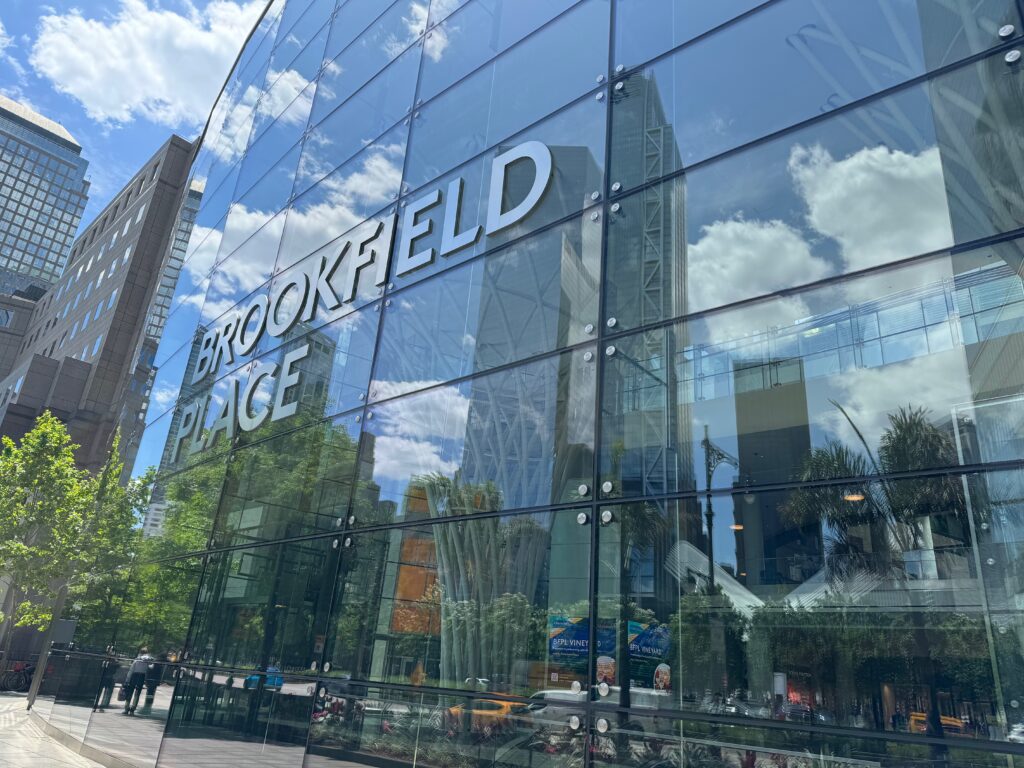
Brookfield Place shopping
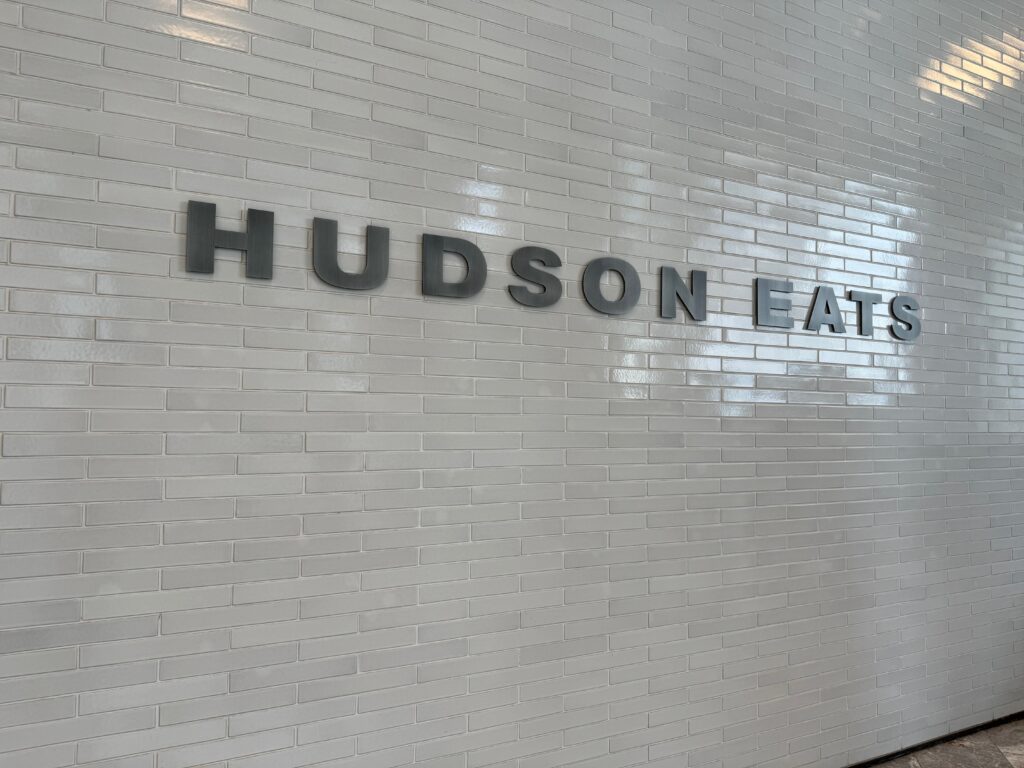
Hudson Eats Food Court
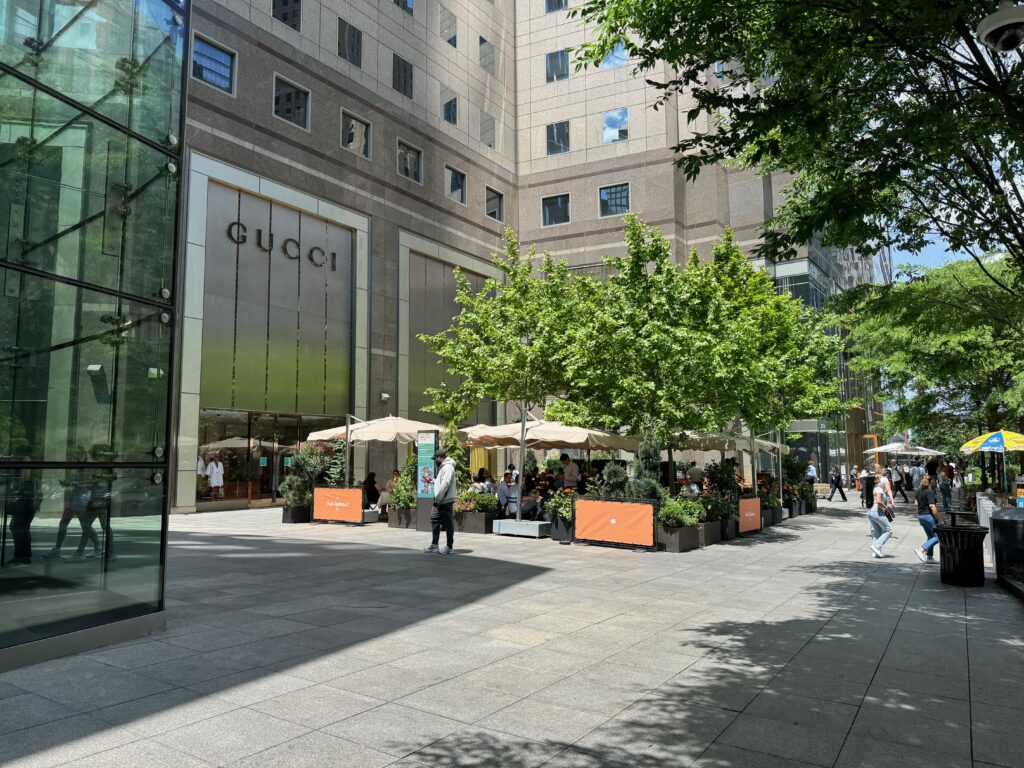
Outdoor dining at Brookfield Place
There are several restaurants in the food court. I chose to eat Mediterranean at NAYA. It was delicious. Once everyone had eaten, we walked across the street to visit the memorial. A beautiful skyscraper was built after the Twin Towers fell on 9/11.
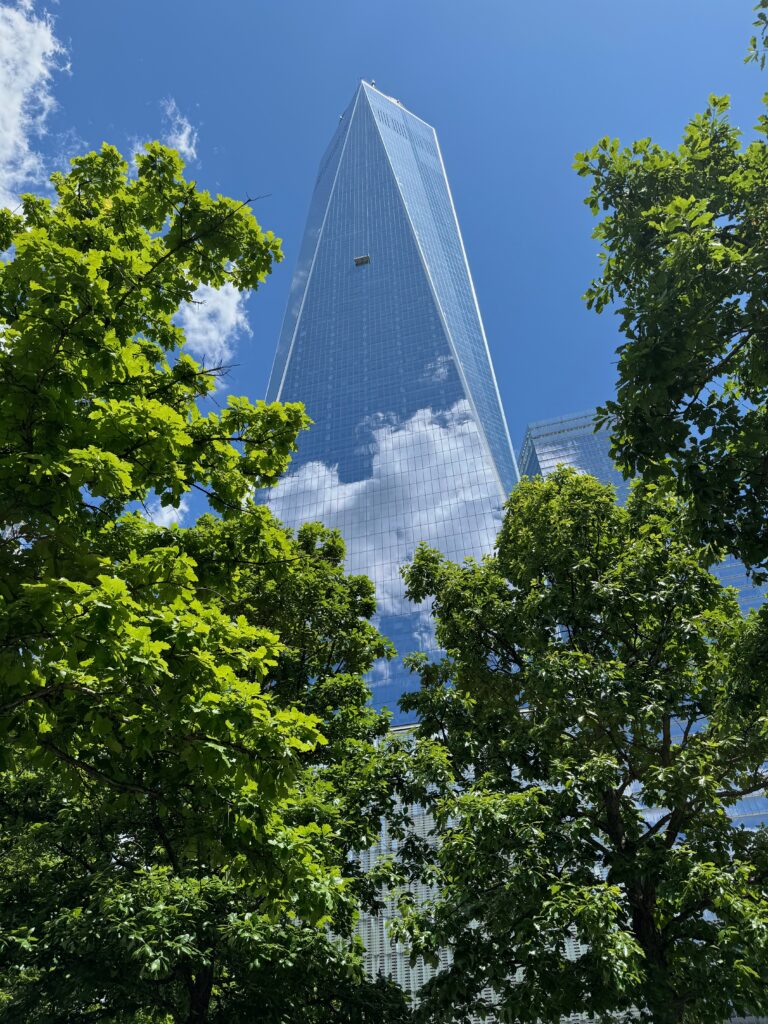
You can stand outside and see the names of those who died during the terrorist attacks of 9/11, or you can purchase a ticket to go inside of the actual museum.

When I visited New York almost 20 years ago, this was just a hole in the ground with fencing up to prevent people from walking into the area. This site brought back memories. I remember 9/11 as if it were yesterday. I was a law clerk, only a couple of weeks on the job when I walked down to my judge’s office and saw him watching the news. He said one of the Twin Towers had been hit by an airplane. He was concerned because his daughter, Dana, was in New York for school. She was a professional ballerina, and he was concerned about her. As we sat there watching, we watched in horror as another plane flew into the second tower. I will never forget that day.
We wanted to also visit the museum, so we purchased tickets and went inside. I do recommend purchasing your tickets online. We just walked up to the front to enter the museum while others stood in line waiting to purchase tickets.
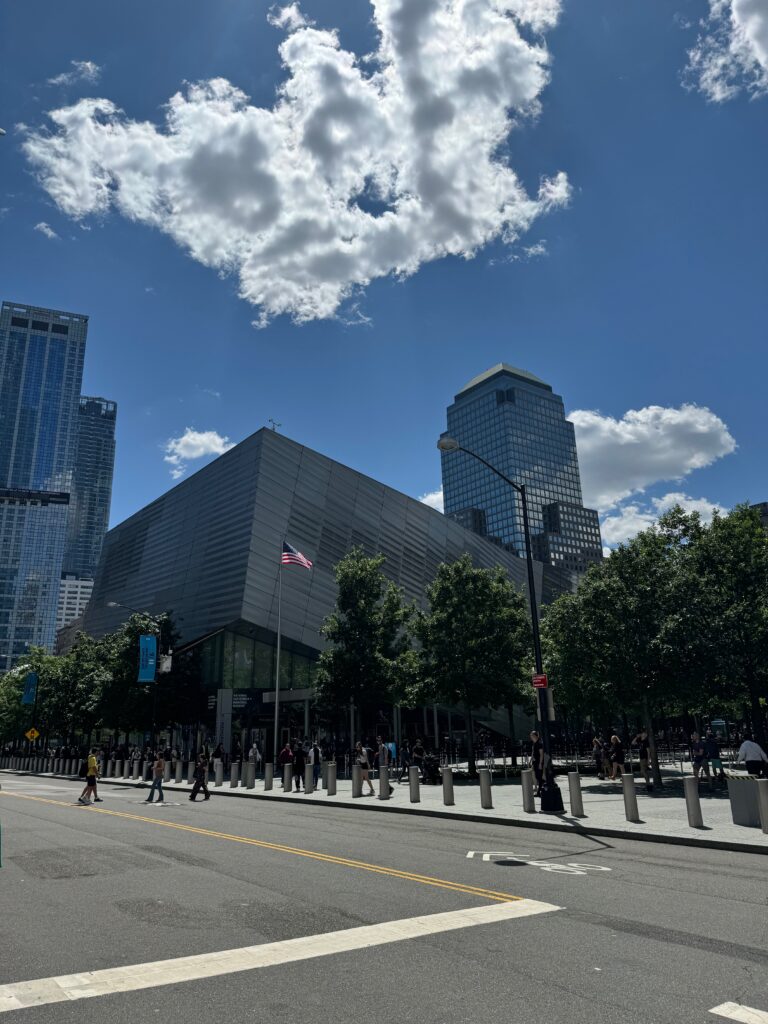
9/11 Memorial
The memorial was filled with items salvaged from the Twin Towers. This plaque was from the World Trade Center dedication day, April 4, 1973.
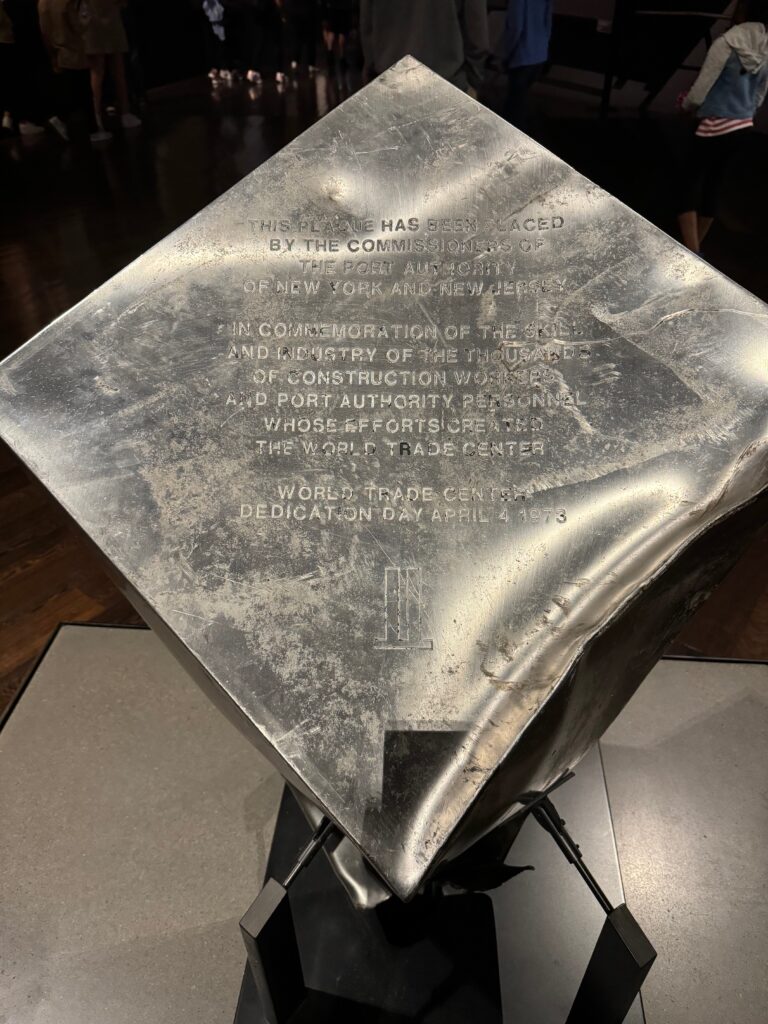
A portion of the slurry wall was removed from the WTC. This wall was used to prevent flooding in the building due to its close proximity to the Hudson River. The proximity of the Hudson River posed a challenge to the construction of the WTC. River water could seep into or flood the site, so the slurry wall created a watertight enclosure for the site. Construction of the slurry wall took 12 months.
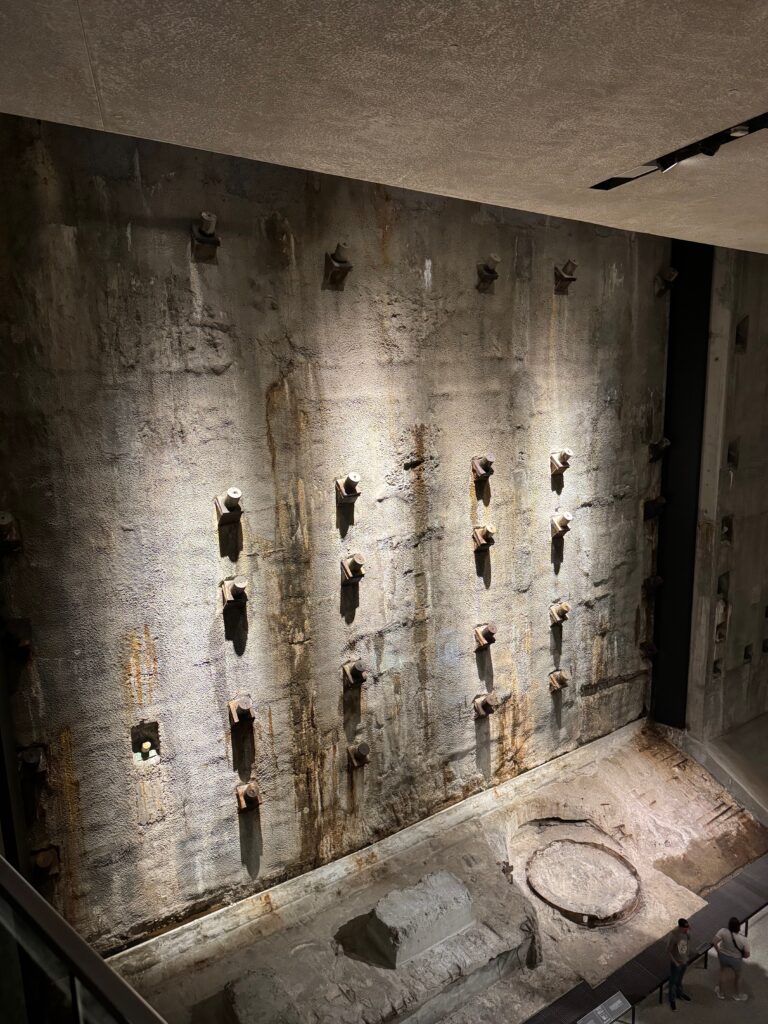
The wall below had several pictures that would appear, then disappear, showing the faces of men and women who were killed during the attacks on 9/11.
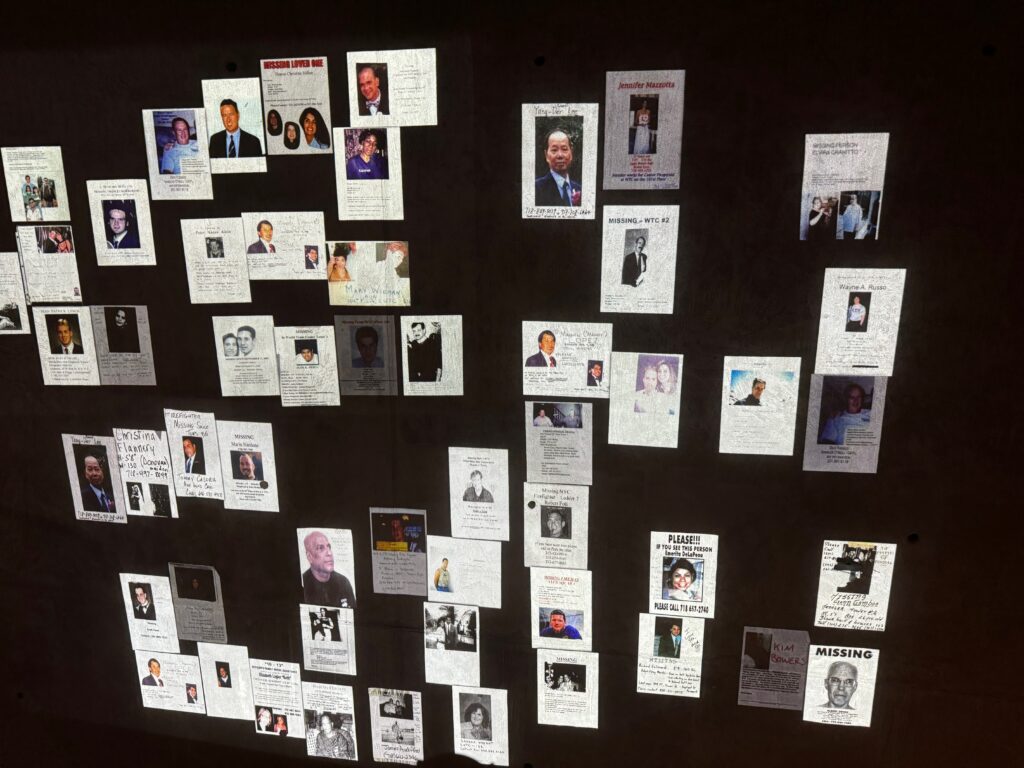
This is a portion of the steel frame of one of the towers where the plane struck the building. The plane struck the building with such force that it bent the steel framing of the building between floors.

Steel frame from the tower where the plane struck the building between floors 95 and 96.
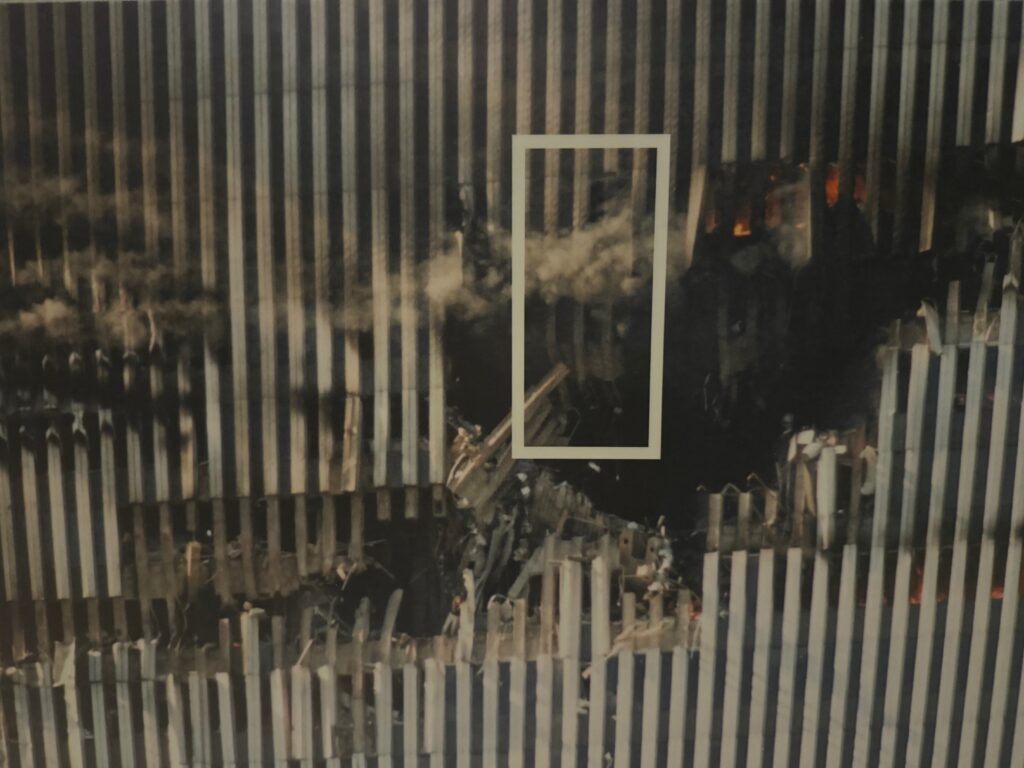
Portion of the building between floors 95 and 96 where the steel frame was bent due to the force of the plane
FDNY Ladder Company Truck 3 responded on 9/11. Many of the responders had just gotten off work from a long shift, but returned to help during the attacks. The truck was parked on the street when the North Tower collapsed, destroying the truck and its entire front cab.
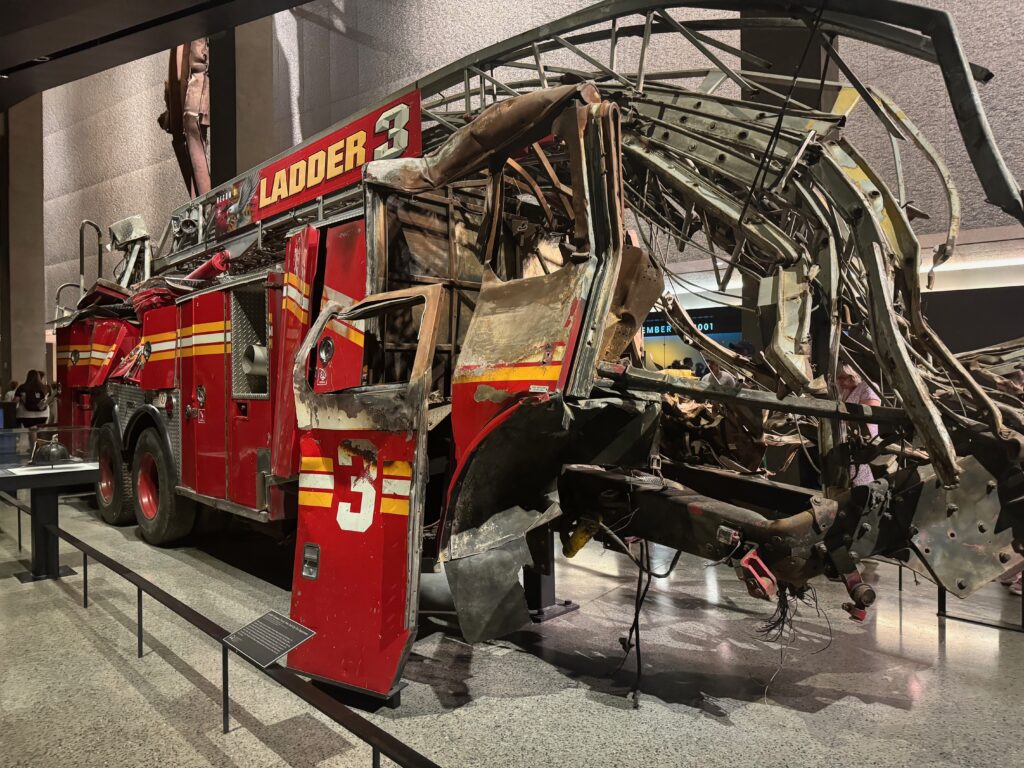
FDNY Ladder 3 truck
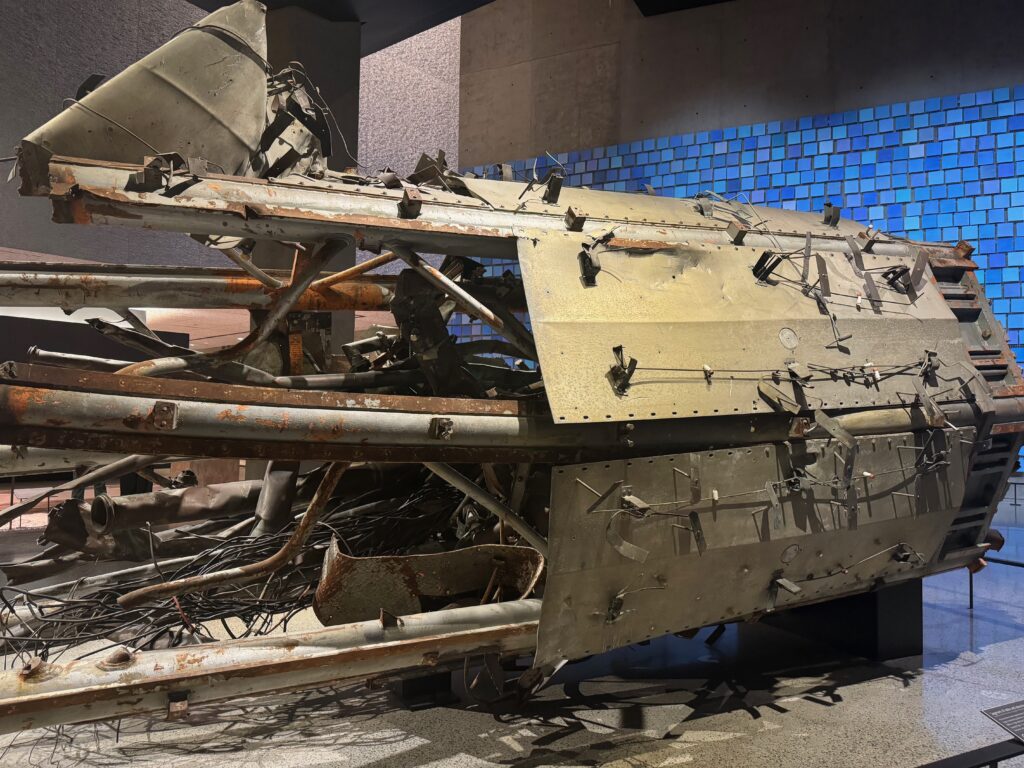
A damaged antennae from the top of the WTC
The Twin Towers were the first skyscrapers to utilize express elevators, which reduced elevator travel time. Each tower had 99 elevators, which included high-speed express cars. Two express cars traveled directly to the Windows of the World restaurant in the North Tower, and two went to the South Tower Observation Deck. This elevator motor, the largest model in the world when installed, powered one of the express cars, which moved at a speed of 1600 feet per minute. Some people were trapped on the elevators when the towers were hit. The attacks caused the worst passenger elevator disaster in history claiming more than 2700 lives at the towers. Elevator cables were severed and hundreds of people were trapped above the 93rd floor. Efforts to pry open newly installed safety locks were successful in only a few cases.
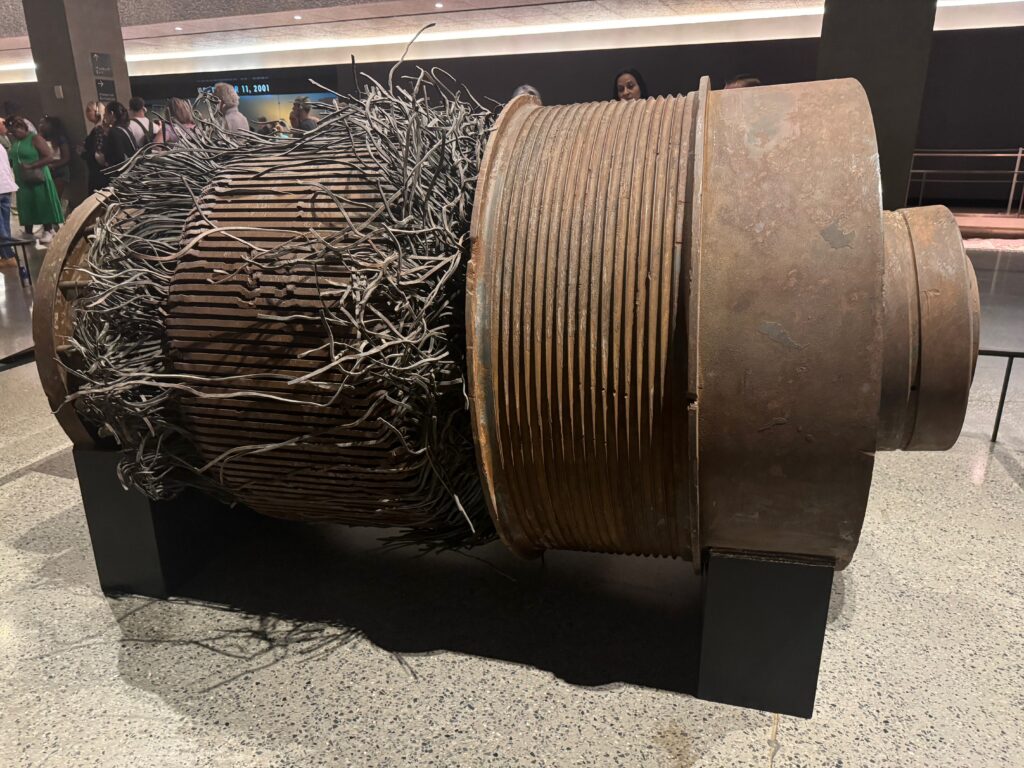
Elevator motor recovered from the WTC
This was the last steel column removed from the WTC site as the recovery at the site ended. First responders, victims’ families, and others signed the column and wrote messages and other tributes to those whose lives were lost.
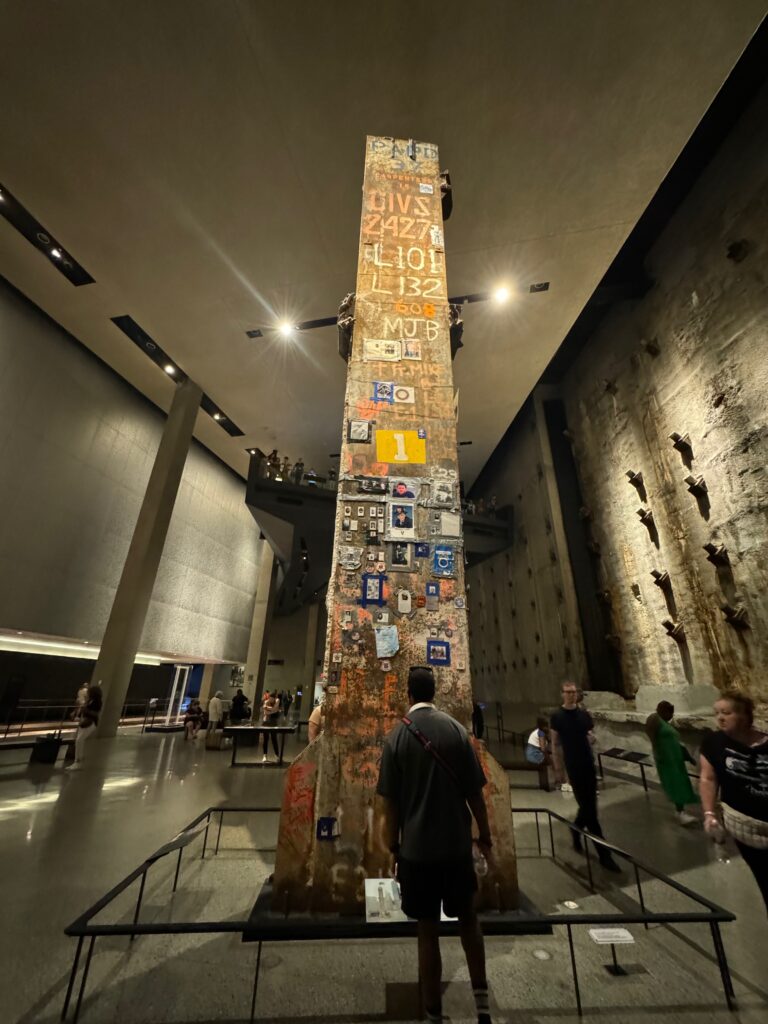
I am glad we visited. My daughter was able to see some of the things she read about. It was a bit overwhelming at times, but it was a beautiful way to remember those whose lives were lost.
Note: All commentary for this blog was taken from the plaques that were displayed in the museum during our trip.






0 Comments